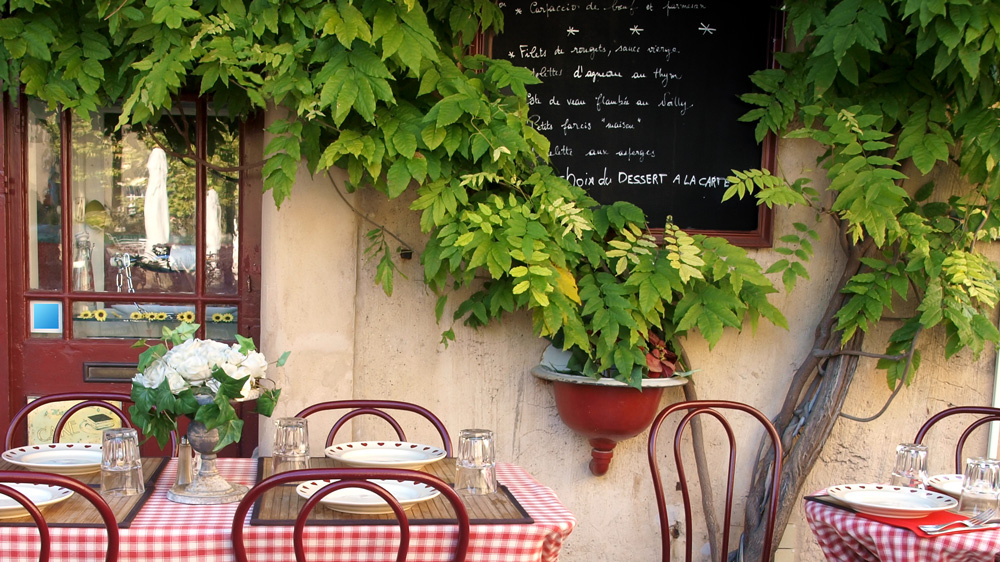
Dine like a local in France: A comprehensive guide
In the land of gourmets and don’t know where to begin when it comes to ordering a meal? Let Amy McPherson help you through the art of eating in a restaurant in France.
L’entrée – Selecting a restaurant
- Choose somewhere that is tucked away in a small side street, far from the crowded areas.
- Look out for restaurants with menus that are printed (or even better, handwritten) on a piece of paper with only a small selection of choices, as this is an indication of seasonal changes to the menu and a chef who has put thought into his cuisine
- Avoid restaurants whose menu is ‘extensive’. Choice is good, but not when it comes to quality food – a restaurant offering everything from burgers to pasta to raclette is there for convenience, not quality.
- Don’t be tempted by English menus. Restaurants that has the menu entirely in French show that locals eat there. An English menu is usually available once you are inside (or we all have Google translate these days).
Le repas – The meal
Some basic terms on French menus:
- La carte – this is what we commonly know as a ‘menu’ with a list of dishes that can be ordered separately.
- Le menu – a fixed-price menu or set menu with two or more courses for a set price, often offered as a daily special.
- L’ardoise – translated as ‘slate’, referring to the boards used to display specials or the set menu selections on a particular day.
- La carte des vins – the wine menu.
- Menu dégustation – a tasting menu. Different to le menu, this comes with a wide selection of dishes in small portions designed to showcase the chef’s specialities.
- Plats du jours – dishes of the day.
Ordering tips in France:
- Order dishes that use seasonal, local ingredients to guarantee freshness and flavour.
- It is customary in France to ask the waiter what is the freshest dish on the menu that day or what they would recommend.
- Steaks are ‘done’ in: bleu/saignant/à point/ bien cuit (blue/rare/medium rare/well done). Beware – the French bien cuit is not completely well done so if you prefer the steak to be very well cooked through then ask for très bien cuit!
- Bread and tap water should be offered free of charge. If you order water on the side, it will be bottled water and you will be charged.
- Wine pairing is especially important in French gastronomy. When in doubt, waiters in quality restaurants are trained to help with wine recommendations.
- Cheese courses are consumed after the main course, not after dessert.
- In general, French waiters will leave you alone during your meal. They won’t be coming around every ten seconds to ask how things are. This doesn’t mean they are not attentive – simply make eye contact and give a small wave if you need anything.
Le départ – On departure
- Ask for l’addition as normal. The bill is usually brought to the table and paid for there.
- Tipping is not a cultural practice. The French would tip if they feel the service deserves the tip, otherwise the bill is generally paid to the exact amount.
- If you do tip, rounding up to the nearest ten is fine (eg. €42.80 to €50), rather than giving a percentage of the total bill.
Some useful phrases
- Je voudrais réserver une table, s’il vous plaît: I would like to reserve a table please
- Avez-vous le menu en anglais?: Do you have the menu in English?
- Avez-vous une suggestion / une spécialité?: Do you have a suggestion / a speciality dish?
- Je voudrais / Je prends: I would like/I will take
- C’était délicieux / très bon: it was delicious / very good
- L’addition, s’il vous plaît: the bill, please
Bon appétit!
First published on Taste of France Issue Four.
Did you enjoy the recipe? Let us know in the comment section below.
Enjoy Taste of France? Well you’re in luck as Taste of France Issue Five is out of the oven!
Latest posts:
- How to eat cheese: A cheesemonger’s guide
- Oysters au gratin with cocoa nibs
- Fresh sheep’s milk cheese balls
- Which is France’s best market in 2025?
- Arras: A Gourmet City Break
Lead photo credit : French bistro (c) Shutterstock
Share to: Facebook Twitter LinkedIn Email
More in Dining in France, French language lesson, French Restaurant, Ordering in France




REPLY
REPLY